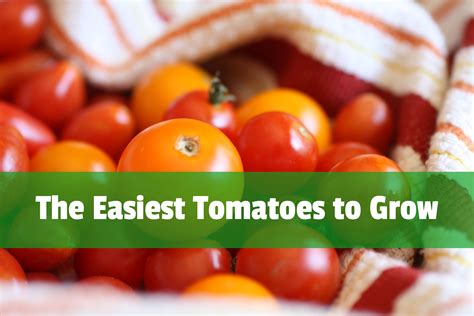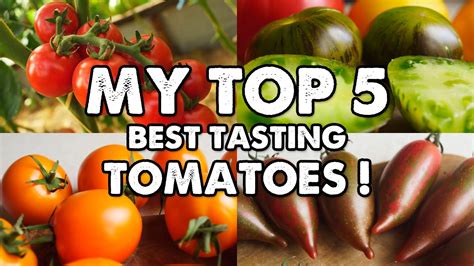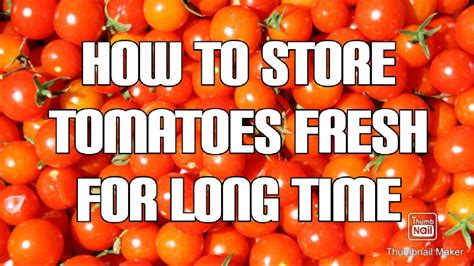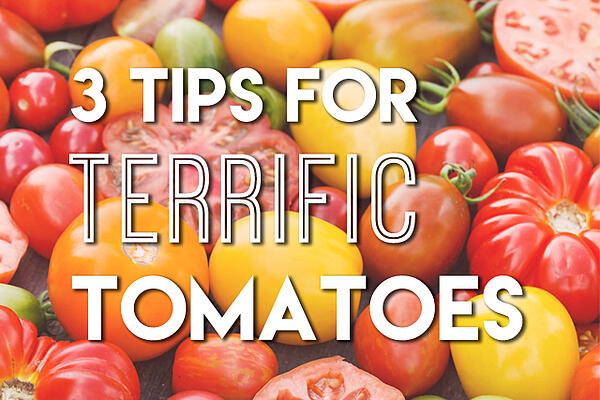Growing tomatoes at home can be a rewarding experience, offering fresh, flavorful produce right from your garden. Whether you’re an experienced gardener or just starting out, knowing the right techniques is key to a successful tomato harvest. In this guide, we will walk you through essential tips for growing healthy, vibrant tomatoes. From selecting the ideal variety and preparing your soil to ensuring proper care through watering, fertilizing, pruning, and dealing with common pests, this article covers everything you need to know. Follow these steps, and you’ll be enjoying homegrown tomatoes in no time, perfect for salads, sauces, and more!
Join shzow.com as we uncover the details of this topic.
1. Introduction
Tomatoes are a beloved and adaptable crop for home gardeners, bringing a delightful and flavorful touch to any dish. Cultivating your own tomatoes can be incredibly fulfilling, as it allows you to savor fresh, vine-ripened produce that surpasses anything found in stores. However, achieving success in tomato gardening requires more than simply planting seeds and expecting growth. Proper planning, meticulous care, and attention to detail are essential for cultivating healthy, bountiful tomato harvests.
This guide provides comprehensive advice for cultivating healthy and productive tomato plants. From choosing the perfect variety to harvesting a bountiful crop, you’ll find everything you need to know. Discover the significance of preparing nutrient-rich soil, learn the proper planting methods, and gain insight into effective watering and fertilizing techniques. We’ll also explore essential practices like pruning, staking, and protecting your tomatoes from pests and diseases. Finally, we’ll share expert tips on harvesting and storing your tomatoes to ensure your efforts result in a delicious and rewarding harvest. Whether you are a novice gardener or a seasoned green thumb, this guide will empower you to cultivate successful tomato plants in your own backyard.

2. Choosing the right tomato variety
Choosing the right tomato variety is essential for a successful harvest. Different tomatoes thrive in different environments and have distinct culinary uses. Before planting, consider your climate, available space, and how you intend to use the tomatoes. For instance, determinate varieties, reaching a specific height and producing all their fruit at once, are perfect for small gardens or container growing. Roma and Patio tomatoes, both determinate varieties, excel in sauces and canning.
Indeterminate varieties, such as Beefsteak or Cherry tomatoes, offer a continuous harvest, producing fruit throughout the growing season. These varieties are ideal for those seeking a consistent supply of tomatoes for salads and snacking. When choosing a tomato variety, it’s crucial to consider your region’s growing conditions. Certain varieties are specifically bred for cooler climates, while others excel in hot, humid environments.
Selecting the ideal tomato variety for your garden’s space, climate, and purpose lays the groundwork for a successful growing season, ensuring you reap the most rewarding harvest from your tomato plants.

3. Preparing the soil
A healthy foundation is key to robust tomato plants. Tomatoes flourish in well-drained soil rich in nutrients, with a slightly acidic pH ranging from 6.0 to 6.8. Prior to planting, test your soil’s pH and adjust it if needed. Incorporating compost or well-rotted manure enriches the soil with organic matter, improving its structure and fertility.
Tomatoes thrive in loose, well-aerated soil. This allows their roots to spread freely, maximizing their access to water and nutrients. To encourage strong root development, work the soil to a depth of at least 12 to 18 inches. Furthermore, incorporating a balanced fertilizer containing nitrogen, phosphorus, and potassium provides your tomato plants with the essential nutrients for a healthy start.
To enhance drainage and mitigate soil-borne diseases, consider utilizing raised beds or mounds, particularly if your soil has a tendency to retain water. Proper soil preparation will establish a nutrient-rich environment, fostering vigorous tomato growth throughout the growing season.

4. Planting and spacing
To ensure your tomato plants flourish and produce a bountiful harvest, proper planting and spacing are crucial. Wait to plant your tomato seedlings until the threat of frost has subsided and the soil consistently reaches a temperature of at least 60°F (16°C). Select a sunny location, as tomatoes require ample sunlight – a minimum of 6 to 8 hours of direct sunlight daily – to thrive.
For optimal growth, plant your tomato seedlings with two-thirds of the plant buried, including a portion of the stem. This encourages the development of a robust root system, promoting stronger growth and better stability. When spacing, allow 18-24 inches between determinate varieties, while indeterminate varieties require more room, typically 24-36 inches apart. To ensure good air circulation and prevent fungal diseases, maintain a 3-4 foot spacing between rows. This also provides easier access for watering and harvesting.
To promote vigorous growth and healthy tomato plants throughout the growing season, consider companion planting. Planting tomatoes alongside basil or marigolds can help repel pests and enhance the overall health of your garden. Proper spacing and planting techniques are essential for establishing a strong foundation for your tomato plants to thrive.
5. Watering and fertilizing
Keeping Your Tomato Plants Thriving: Watering and Fertilizing
Watering and fertilizing are crucial for healthy and productive tomato plants. Tomatoes require consistent moisture, so aim for deep watering once or twice a week, adjusting based on the weather. Watering at the base of the plant, rather than overhead, helps prevent foliage diseases and ensures the roots receive the necessary hydration. Be careful not to overwater, as this can lead to root rot and other problems.
Start fertilizing your plants a few weeks after planting. Choose a balanced fertilizer that contains equal amounts of nitrogen, phosphorus, and potassium, or opt for a tomato-specific formula. This will encourage robust growth and ample fruit development. Apply fertilizer every 3-4 weeks throughout the growing season, carefully following the manufacturer’s instructions to prevent over-fertilization. Over-fertilizing can lead to excessive leaf growth, hindering fruit production.
Incorporating compost or well-rotted manure into the soil before planting can provide a steady supply of nutrients and improve soil structure. Regularly monitoring your plants and adjusting watering
6. Pruning and staking
Pruning and staking are essential practices for supporting healthy tomato growth and enhancing fruit quality. Pruning involves removing the lower leaves and suckers, which grow between the main stem and branches. This practice improves air circulation and directs the plant’s energy towards fruit production rather than excessive foliage. Regular sucker pruning for indeterminate varieties also helps control plant size and makes harvesting easier.
Staking offers essential structural support, keeping plants upright and preventing them from sprawling on the ground. This prevents potential disease and pest issues that can arise from contact with the soil. Use stakes or cages to support your tomato plants, inserting them early in the growing season to avoid disturbing the roots later. When staking, insert the stake into the soil near the plant and tie the stem loosely to the stake with garden ties or twine. This allows for healthy plant growth and movement. By combining proper staking and pruning techniques, you can cultivate healthier plants and enjoy a more productive harvest.
7. Dealing with pests and diseases
Keeping your tomato plants healthy and productive requires vigilant pest and disease management. Common culprits include aphids, tomato hornworms, and whiteflies. Regularly inspect your plants for signs of these pests and take swift action. For aphids and whiteflies, insecticidal soap or neem oil can effectively eliminate them. Handpicking hornworms can also significantly reduce their population.
Tomatoes are vulnerable to several diseases, including blight, blossom end rot, and wilt. To combat blight, promote good air circulation by spacing plants appropriately and abstaining from overhead watering. Promptly remove any infected leaves and avoid gardening while plants are wet to limit disease transmission. Blossom end rot, marked by dark, sunken blemishes on the fruit, is often attributed to a calcium shortage. Remediate this by maintaining consistent watering and applying a calcium-rich fertilizer.
Maintaining a healthy tomato crop requires both vigilance and proactive measures. Regular monitoring of your plants and good garden hygiene, like removing fallen leaves and debris, can help prevent many problems. Choosing disease-resistant tomato varieties further reduces the risk of serious outbreaks. By staying attentive and taking steps to address potential issues, you can effectively manage pests and diseases, leading to a healthier and more bountiful harvest.
8. Harvesting and storing
Harvesting and storing tomatoes properly is essential to enjoying the best flavor and extending their shelf life. Tomatoes are typically ready for harvest when they have reached their full color and are firm to the touch. For most varieties, this means a vibrant red, though some may ripen to shades of pink, orange, or yellow. Gently twist or cut the fruit from the vine, taking care not to damage the plant.
If you need to harvest tomatoes before they are fully ripe due to weather conditions or pests, you can let them ripen indoors. Place the tomatoes in a single layer in a cool, dry area, away from direct sunlight. Ethylene-producing fruits like apples can help speed up the ripening process if placed with the tomatoes.
For longer-term storage, you can freeze tomatoes for use in sauces and soups. Blanch and peel them before freezing to preserve quality. Canning is another option for preserving tomatoes. Use proper canning techniques to ensure safety and extend the shelf life of your harvest. Proper harvesting and storage practices will help you enjoy the fruits of your labor throughout the year.
9. Tips for successful tomato growing
To ensure successful tomato growing, follow these key tips. Begin by selecting a tomato variety that thrives in your climate and growing conditions. For optimal results, choose disease-resistant varieties and those that are well-suited to your available space, whether it be a small container or a large garden plot.
To ensure healthy plant growth, start by preparing your soil. Enrich it with compost or well-rotted manure to provide essential nutrients. When planting, maintain proper spacing between plants to allow for good air circulation, which helps to prevent fungal diseases. Consistent watering is key. Water deeply but infrequently, ensuring the soil stays moist but avoids becoming waterlogged.
To foster strong growth and plentiful fruit, fertilize your plants regularly with a balanced or tomato-specific fertilizer. Pruning is essential for healthy tomato plants. Remove suckers and lower leaves, which encourages better air circulation and directs the plant’s energy to fruit production. Support your plants with stakes or cages to keep them upright and minimize the chances of disease.
Regularly inspect your tomato plants for any signs of pests or diseases, and address any problems promptly. Once your tomatoes are ripe, harvest them and store them correctly to maximize their flavor and extend their freshness. By implementing these strategies, you can cultivate healthy, productive tomato plants and reap a plentiful harvest.
10. Conclusion
Growing tomatoes at home is a truly rewarding experience, offering delicious, fresh produce that elevates both your meals and gardening journey. The key to success lies in selecting the right tomato variety, preparing the soil meticulously, and adhering to proper planting and spacing methods. Maintaining consistent watering and fertilization schedules is essential for robust plant growth and bountiful harvests.
Proper plant management, including pruning and staking, promotes healthy growth and disease resistance. Vigilant pest and disease control safeguards your crop from common threats. Harvesting tomatoes at their peak ripeness and utilizing appropriate storage techniques maximizes their flavor and extends their usability throughout the year.
Gardening is a blend of art and science, a journey of constant learning and refinement with each new growing season. By implementing the techniques described in this guide and adjusting them to your unique environment, you can cultivate a flourishing tomato garden. Embrace the process, and you’ll be rewarded with a plentiful, homegrown harvest that elevates your culinary endeavors.
shzow.com
